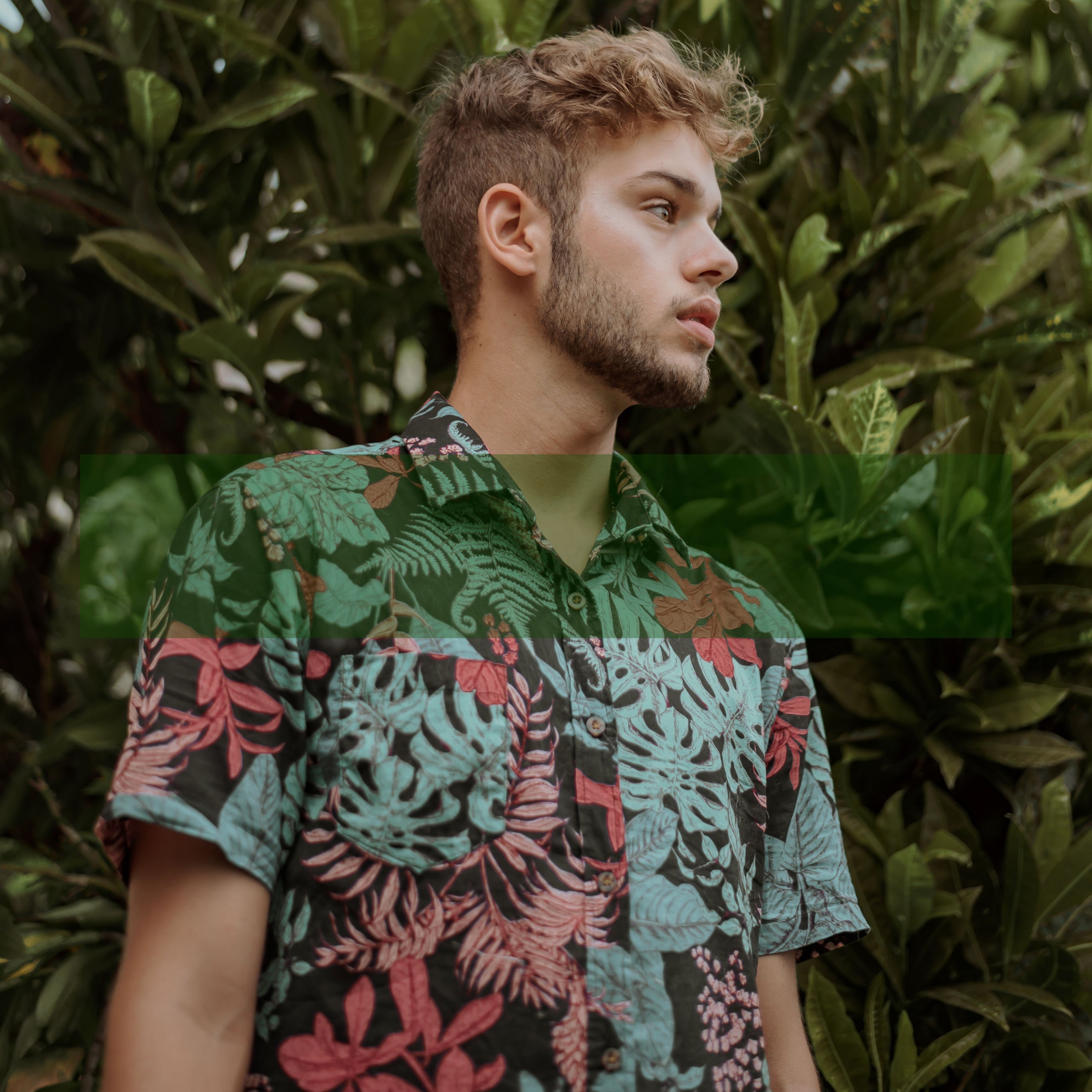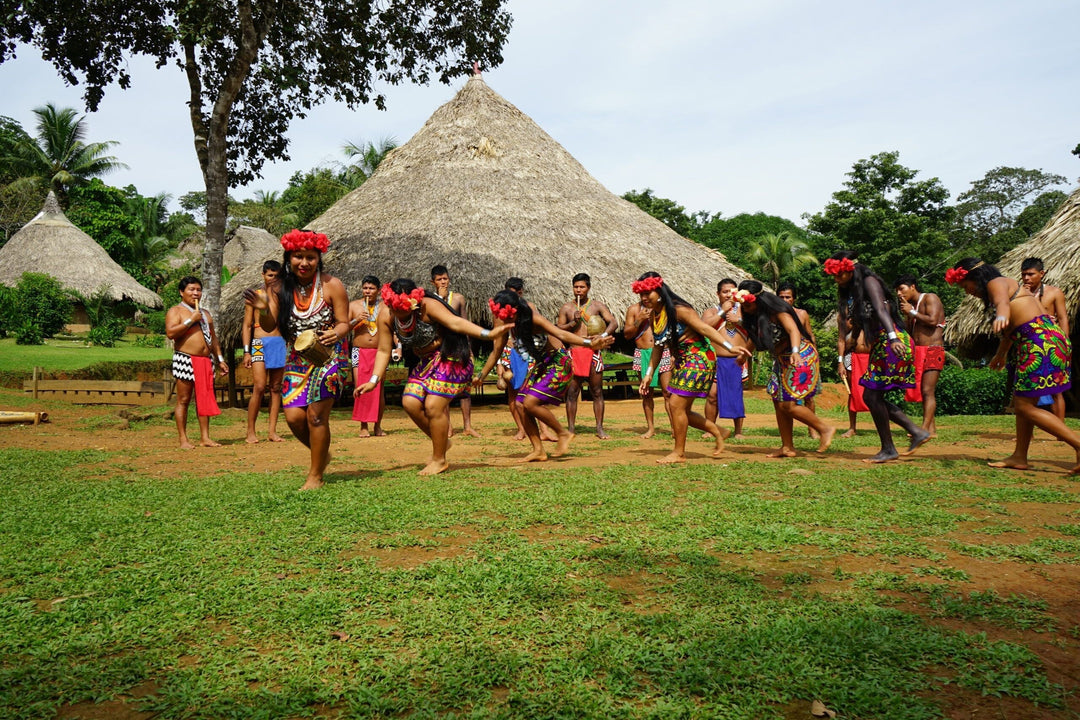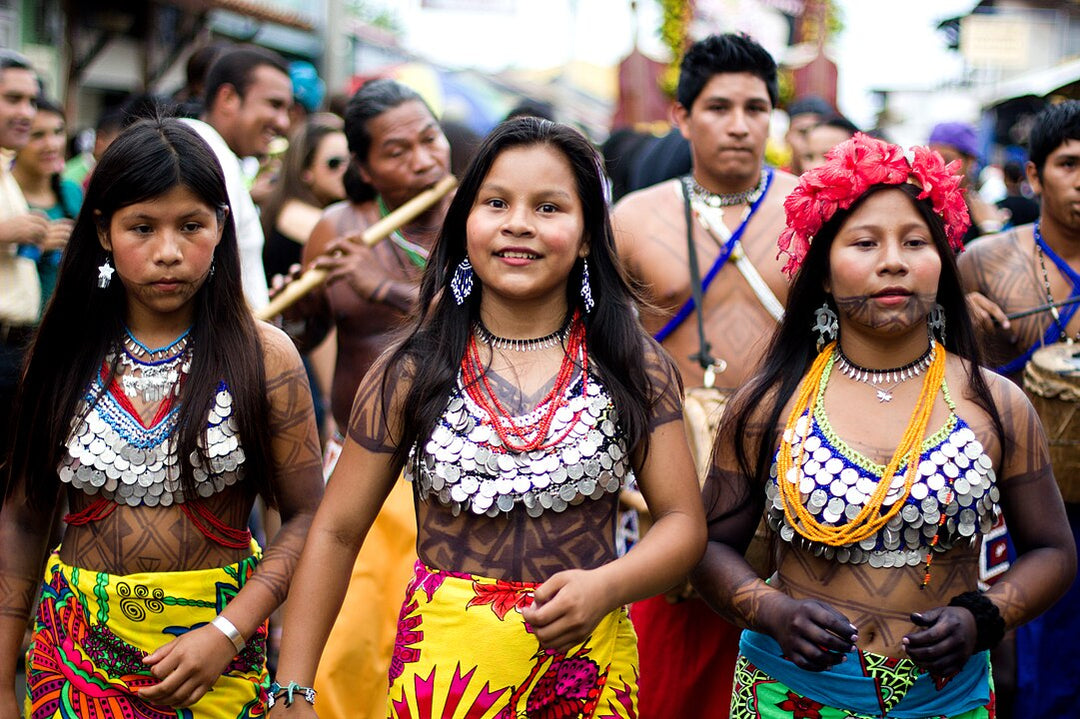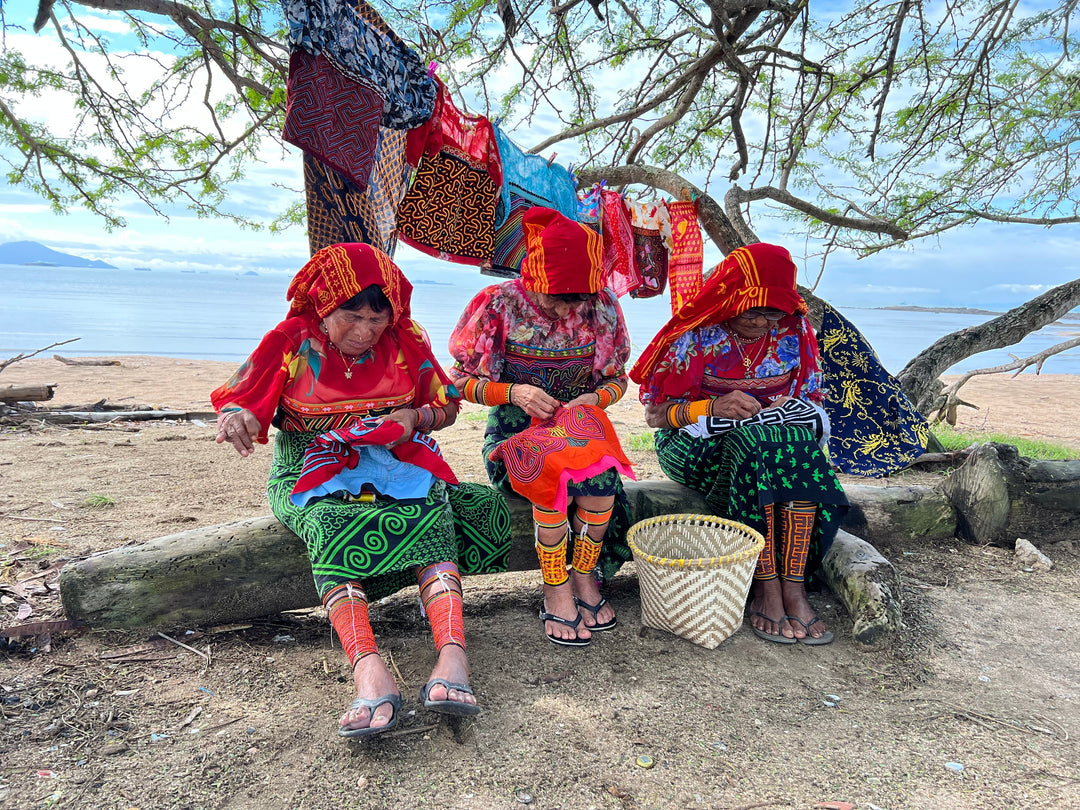Why Guna Artisans Originally Started Making Molas: A Story of Art, Culture, and Resilience

The art of the mola, characterized by its intricate layered designs and vibrant colors, is a unique and powerful expression of the Guna (or Kuna) people’s heritage. This iconic textile craft began as a way for the Guna people, indigenous to Panama and Colombia, to preserve their cultural identity and convey their deep connection to the natural world. This blog explores the history, cultural significance, and resilience behind mola-making, shedding light on why the Guna people originally started creating these beautiful textiles.
The Origins of Mola Art
The word "mola" comes from the Guna language, meaning "cloth" or "blouse." Molas began as the decorative panels worn on traditional Guna blouses, crafted exclusively by Guna women. Originally, these textiles were not just about aesthetics but represented the community’s heritage, worldview, and spirituality. Each piece tells a unique story through vivid imagery, geometric patterns, and symbols that reflect the Guna people’s connection to nature and their beliefs about the universe.
The shift to creating molas arose from the Guna people’s desire to preserve and express their culture in the face of outside influence. When Spanish colonizers arrived in Latin America, they disrupted many indigenous ways of life. The Guna responded by creating art that retained their identity, beliefs, and values, embodying their resilience and resistance in each piece of mola art.

From Body Art to Textile Craft
Before molas became a textile tradition, Guna women decorated their bodies with intricate designs, using natural dyes to paint geometric patterns and shapes directly on their skin. These body paintings held spiritual significance and often represented aspects of Guna mythology, such as the natural and supernatural realms. However, with increased access to cloth brought by European settlers, the Guna began transferring these designs from skin to fabric, a transition that helped preserve the designs for future generations.
This shift from body painting to textile art allowed the Guna to continue expressing their identity in a tangible form that could be shared beyond their own community. The introduction of fabric also enabled these designs to be preserved and passed down, creating a legacy that would withstand generations and external influences. The mola thus became a way to safeguard cultural symbols, turning each piece into a wearable form of art and cultural identity.

Symbolism in Early Mola Designs
Each traditional mola is more than just an art piece—it’s a story told through colors, shapes, and symbols. Early mola designs often reflected the natural environment surrounding the Guna people, representing animals, plants, and landscapes that held spiritual and cultural significance.
Animals:
Common figures in mola art include turtles, birds, fish, and jaguars, animals that are vital to the Guna worldview and often appear in their folklore.
Geometric Patterns:
Geometric designs in molas serve as a symbolic language, reflecting the interconnectedness of nature, humans, and the spiritual realm. These patterns have roots in ancient indigenous art and mythology, giving each mola a timeless quality.Natural Scenes:
Themes of water, forests, and islands are commonly found in molas, symbolizing the Guna’s relationship with their surroundings and their respect for the land and ocean.By incorporating these symbols into their clothing, the Guna people could carry their culture with them and communicate their beliefs through art, even when traveling or interacting with outsiders.
Preserving Identity Through Art
The mola-making tradition strengthened during the 20th century as the Guna people faced increased influence from external forces. At the time, Panama was in the process of modernizing, and there was pressure on indigenous communities to assimilate into mainstream society. The Guna people, however, resisted this by promoting their customs and language, reinforcing their autonomy through cultural practices, including mola-making.
In the 1920s, the Guna led a successful revolution to preserve their autonomy and cultural practices, which is now celebrated annually as the "Dule Revolution." Molas played a significant role in this movement, symbolizing resistance and cultural pride. By continuing to make molas, the Guna expressed a steadfast commitment to preserving their identity, traditions, and way of life.

How Molas Became a Cultural and Economic Force
Over time, mola art has transcended its origins, becoming both a cultural symbol and an economic asset for the Guna people. As tourists and art enthusiasts from around the world began to recognize the beauty and uniqueness of molas, these textiles gained popularity as collectible art pieces, fashion statements, and home decor items.
The mola industry now provides a source of sustainable income for many Guna families. Artisans can maintain their traditional lifestyles and contribute to their communities while sharing their art with a global audience. This shift has helped revitalize mola-making, enabling artisans to stay rooted in their culture while adapting to meet new market demands.
TraderBrock and other fair-trade businesses work directly with Guna artisans to ensure that each mola is ethically sourced and that artisans receive fair compensation for their work. By purchasing authentic molas, customers not only bring home a unique piece of art but also support the continuation of an ancient tradition.
Frequently Asked Questions
What is a mola?
A mola is a handcrafted textile created by Guna women from Panama and Colombia, known for its vibrant colors, layered designs, and cultural symbolism. Molas are traditionally used as panels on blouses but are now celebrated as standalone art pieces.
Why did the Guna people start making molas?
The Guna people originally began creating molas as a way to preserve their cultural identity, spirituality, and worldview, transitioning from traditional body painting to textile art in response to outside influences.
What symbols are common in mola art?
Common symbols include animals like birds, fish, and jaguars, as well as geometric patterns and natural scenes, all representing the Guna’s connection to nature and spiritual beliefs.
Are molas still made by hand?
Yes, authentic molas are made by hand using traditional layering, cutting, and stitching techniques. Each piece is unique and reflects the artisan’s individual skill and creativity.
How can I support Guna artisans?
You can support Guna artisans by purchasing authentic molas from fair-trade sources that work directly with indigenous communities, ensuring fair wages and ethical practices.
Conclusion
The story of mola art is one of resilience, pride, and cultural preservation. From body painting to textile art, the Guna people have used molas to maintain a distinct identity in a changing world. Each mola is a testament to their commitment to tradition, their deep respect for the natural world, and their resistance to cultural erasure. By supporting authentic mola art, you’re not only bringing home a stunning piece of craftsmanship but also helping preserve a rich heritage that continues to inspire generations of artisans.







Leave a comment